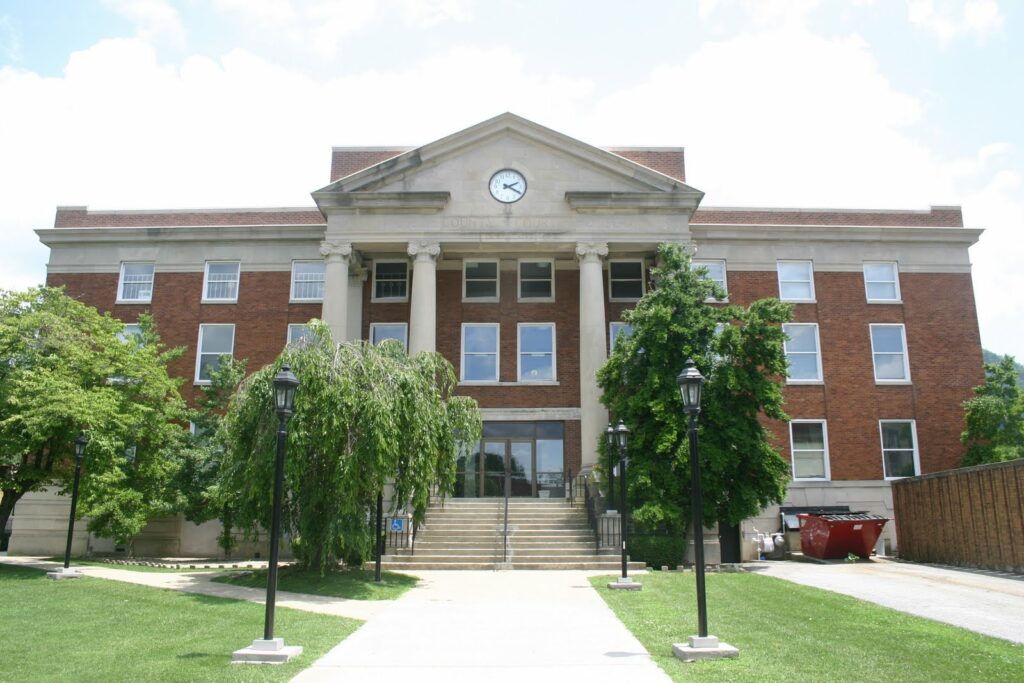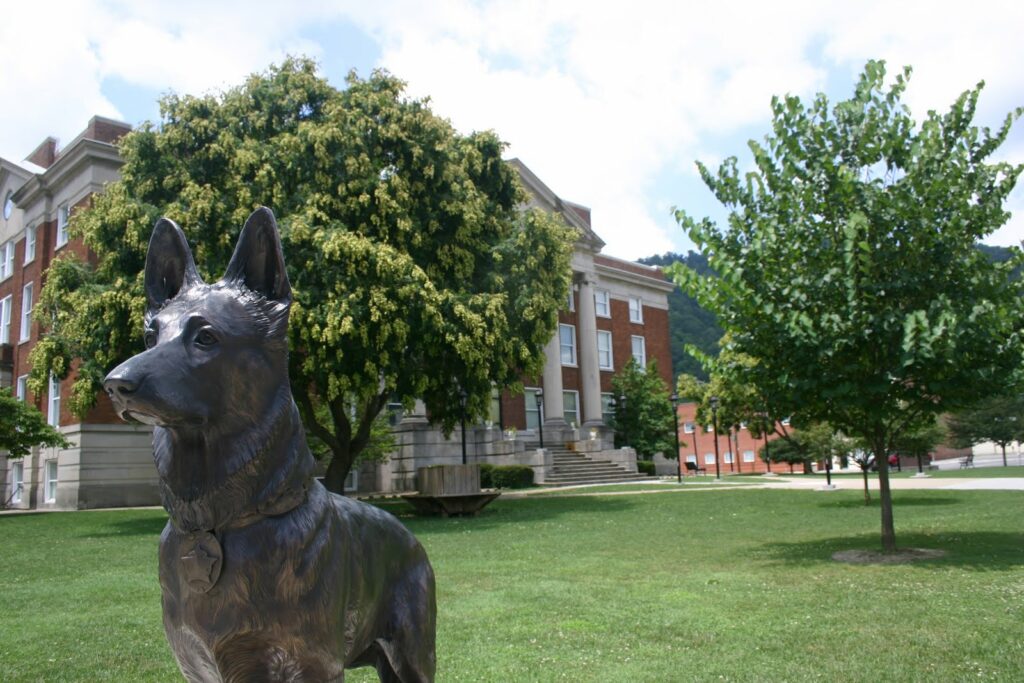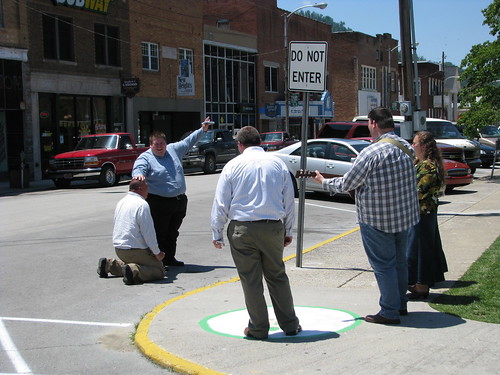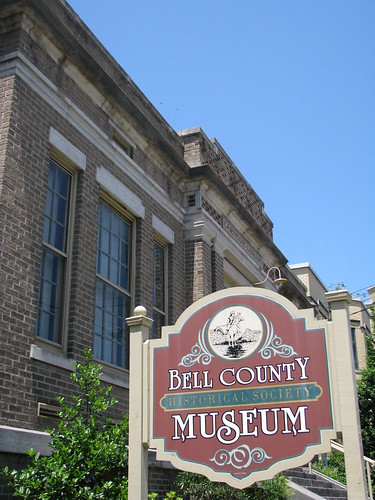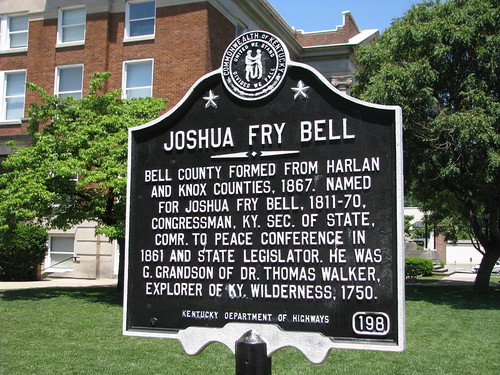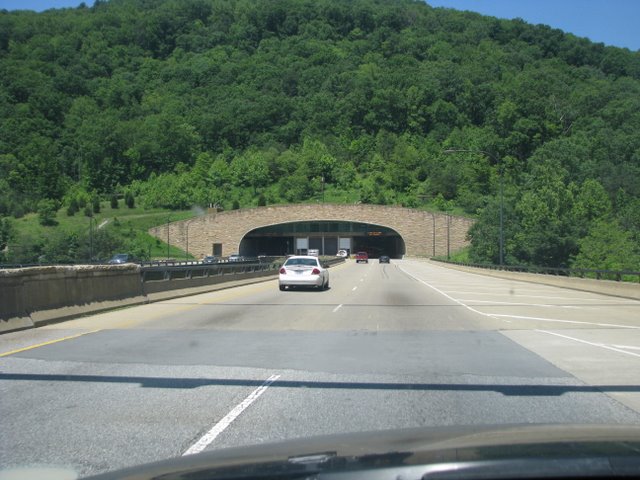 |
| Cumberland Gap Tunnel (Tennessee Portal), Cumberland Gap, Tenn. |
Traveling between Middlesboro, Ky. and Cumberland Gap, Tenn. used to be quite a dangerous trip; old US 25E was nicknamed “Massacre Mountain” because of the number of fatalities occurring on the windy road. Today, that path has been restored to nature and is a hiking path. There is a great 33-photo-tour of the old US 25E soon after it was closed and the ‘restoration to nature’ project began. Here is a photo in 2002 of students planting saplings in the old roadbed. Of course, this old pass – one of only three natural paths through the Appalachians – “served as a gateway in prehistoric times, when Native Americans used it as a footpath and buffalo used it to seek greener pastures.” [*]
Vehicular travel now travels under the mountain through the Cumberland Gap Tunnel. Begun in 1991 and opened in 1996, there are two two-lane tubes with each traveling 4,600 feet. During construction, subterranean mountain streams would have pumped hundreds of gallon every minute into the tubes. As a result, the tubes are lined with thick PVC piping. [*] The total project to construct the tunnel ran $280 million (the project was about 2x budget).
Interestingly, the Cumberland Gap Tunnel is one of only two tunnels in the United States that traverse a state line (the other is on I-77 between W. Va. and Va.). Although the old US 25E meandered also through Virginia, the tunnels do not (though they are mere yards away). [* – great link on planning, construction details]
Note: Yes. The photo was taken of the Tennessee portal, but the Kentucky portal looks about the same. And the latter is in Bell County. So there.
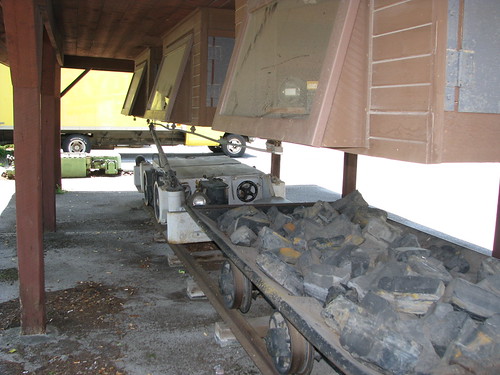
or read King Coal
by Upton Sinclair, you have discovered some of the horrors of coal mining. This display spoke to me of that story and not (its intended story) of the jobs and investment that the coal companies have brought to the people of Appalachia.

